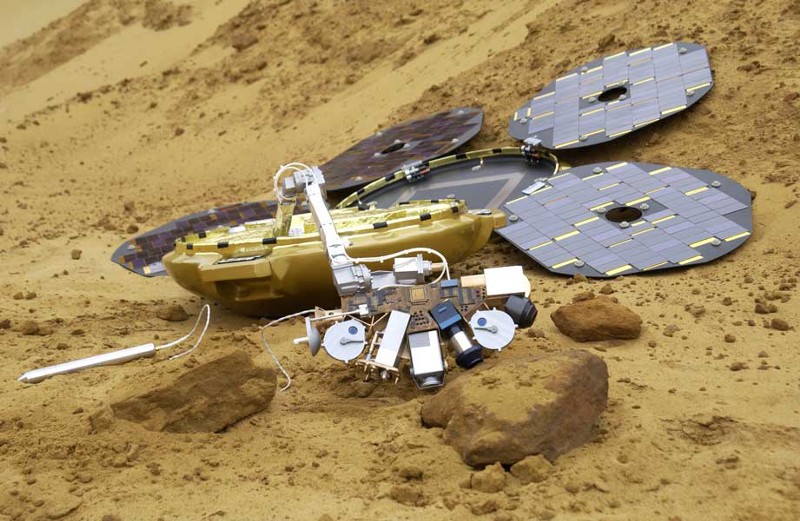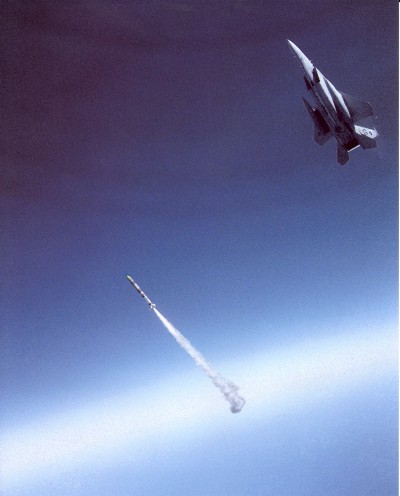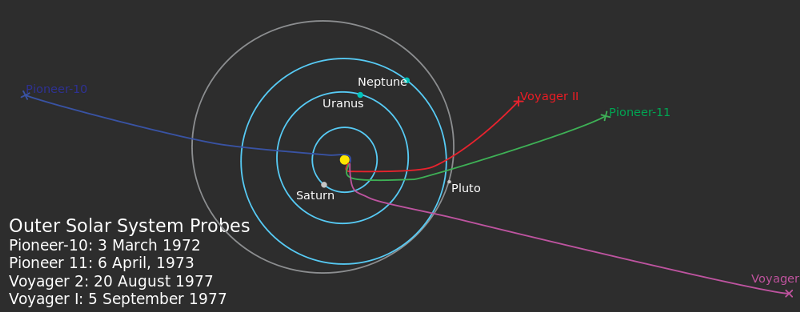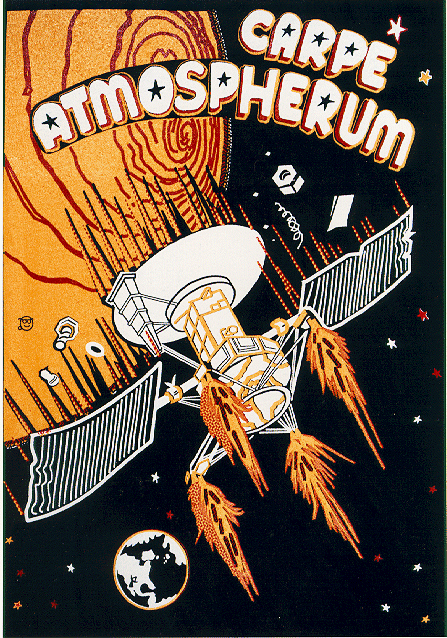

Every spaceship eventually reaches the end of its life. This week it’s the turn of MESSENGER, a NASA probe on course to slam into the surface of Mercury at 8,750mph–becoming one of the craters it has spent its whole life studying.
But a 50-foot-wide hole in the dirt in an alien world isn’t the only way that spacecrafts reach their “end of mission.” Some are brought home, some jet off into the inky blackness of interstellar space and others remain in orbit forever. When its time is up, here’s a full list of ways a spaceship can die.

1. Leave It There

Every craft that we’ve ever sent to another planet is still there, to a greater or lesser extent. Twenty-one objects on Venus, 13 on Mars (including nine landers/rovers) and a startling 76 different lunar craft are all slowly decaying in their new homeworlds, not to mention the Huygens probe on Titan, Shoemaker on the asteroid Eros, Hayabusa on the asteroid 25143 Itkowa and the Philae lander on comet 67P/Churyumov-Gerasimnko. In total, there are over 476,000 pounds of Earth objects in alien worlds.
Almost all of these places are utterly hostile to life as we know it, meaning that any terrestrial microbes that survived the vacuum of space won’t contaminate their new homes. The exception is Titan, which is thought to have an atmosphere rich in complex organic chemistry, with a possible subsurface liquid ocean–but the European Space Agency reckons that Saturn’s largest moon is too cold for anything carried on Huygens to survive.
There are also several spacecraft that never actually landed anywhere but are now in slow, permanent orbit around the Sun following mission completions or failures beforehand. Twenty-six U.S. spacecraft (including most of the Mariner and Pioneer craft), 16 Russian probes, five from the European Space Agency and seven Japanese craft are now lying defunct in a sun-centric orbit. Perhaps in the years to come, spaceflight will get cheap enough that we’ll be able to recover them and put them in a museum. For now, though, they’re staying put.
Finally, around Earth there are a few dead satellites in a “graveyard orbit“–high above where they can do any harm to operational satellites–used when there’s not enough fuel left, or it’s too risky, to bring them back to Earth. SNAP-10A, an experimental nuclear reactor that NASA launched into space in 1965, is the most notable occupant of this region. It failed after about 43 days, and it’s now too dangerous to bring it back to the surface. It’s expected to remain in place for about 4,000 years, at which point it’ll re-enter the atmosphere. Someone leave a note for whomever’s on Earth then, yeah?

2. Shoot It Down

In lower Earth orbit, things are a little easier. Most satellites that reach the end of their natural lives are in unstable orbits and eventually burn up in the atmosphere. But a few have met more spectacular ends.
The Solwind satellite, launched in 1979, saw its batteries failing by 1985. Despite the protestations of scientists, who argued it was still sending back useful information, a U.S. anti-satellite missile test selected it as a target and successfully destroyed it in orbit later that year. It left behind 285 bits of orbital debris, all of which had deorbited by 2008.
In 2007, in the wake of a U.S. withdrawal from the anti-ballistic missile treaty in 2002, China showed off its growing defense power by shooting down one of its own meteorological satellites. A rocket destroyed the FY-1C polar-orbiter, yielding more than 2,300 bits of trackable debris the size of a golf ball or greater–the largest recorded creation of space junk in history. Widespread international condemnation followed, and much of the debris remains in orbit with a 2015 NASA estimate calculating that about a third of the largest bits will still be up there in 2035.
Perhaps in response, the United States shot down a satellite of its own in 2008. The target was a military reconnaissance satellite called USA-193, which had malfunctioned shortly after deployment in December 2006, losing contact with the ground within hours. It was not only in a rapidly deteriorating orbit, but it was also carrying about 1,000 pounds of a hazardous fuel called hydrazine that would have spread a sizeable toxic cloud around any crash site. To avoid such an event (and, some say, the possibility of the technology onboard falling into foreign hands), a fired rocket hit the satellite at a whopping 22,000 m.p.h. A much lower orbit than the Chinese satellite meant that most of the remains fell to Earth over the course of the following 40 days, with the final chunks deorbiting the following year.

3. Into the Unknown

Many of mankind’s early space missions had no particular destination in mind, just a few stop-off points along the way. Some of those are now in a solar-centric orbit, as mentioned above; but a few are on their way out of the Sun’s sphere of influence entirely, zipping off into the darkness of interstellar space.
The most famous are the Voyager probes, which hold the record for the most distant man-made objects from Earth–11.2 billion miles from the Sun. They launched in 1977, zipped by Jupiter, Saturn, Uranus and Neptune before 1990 and have now exited the solar system entirely. Amazingly, they’re still sending back data, though–and will continue to do so until 2025. After that, we won’t expect any more information, since it’ll be about 40,000 years before Voyager 1 encounters anything else–a close approach to a star called Gliese 445. Once that adventure is over, Voyager will end up gently orbiting the center of the Milky Way Galaxy, pretty much forever.
But they aren’t our only interstellar explorers. The Pioneer 10 and 11 probes launched earlier than the Voyagers (in 1972 and 1973, respectively) but are traveling slower so were overtaken in 1998. We lost contact with Pioneer 10 in 2003, but it’s headed in the direction of Aldebaran in the Taurus constellation. We last heard from Pioneer 11 in 1995, which at that time was bound for the constellation of Aquila, reachable in about four million years.
That just leaves New Horizons, the youngest of our intrepid extrasolar probes. The NASA craft launched in 2006 and will pass close by Pluto later this year, becoming the first spacecraft to do so. After that, it’s got enough juice to fly by another object or two in the cold, distant Kuiper belt, but we don’t yet know where it’ll be directed. Assuming it survives that, it may reach the edge of the solar system around 2047, though since it’s traveling about 8,900 m.p.h. slower than the Voyager probes, it’ll never overtake them.

4. Crash Landing
That just leaves the most spectacular spacecraft death of all–a full-speed impact into the surface of a planet. On Earth, most dead spacecraft end up in the Spacecraft Cemetery–an area of the southern Pacific Ocean about 2,400 miles southeast of New Zealand, chosen especially for its remoteness. Many spacecraft, including the Mir space station and the capsules of waste ejected from the International Space Station, find themselves in a watery grave around this region.
Several craft have descended into the thick atmospheres of the solar system’s gas giants. In 1995, the Galileo spacecraft released a 750-pound probe equipped with a parachute into Jupiter’s atmosphere. Despite a weighty heat shield, the probe lasted less than an hour before losing contact after overheating. It was eventually destroyed completely–the parachute would have melted first within 30 minutes, followed by the aluminium components 40 minutes later as it passed through a sea of supercritical fluid hydrogen. The remaining titanium structure is thought to have lasted another 6.5 hours before finally vaporizing and mixing with Jupiter’s liquid metallic hydrogen interior.

That probe’s mothership, Galileo, launched into the atmosphere in 2003 to prevent contamination of the moon Europa, which may have a subsurface ocean. Lacking any heat shield, it lasted mere seconds. A similar fate will likely befall the Juno probe after it completes its own Jupiter mission in 2017; the Cassini spacecraft will also plunge into Saturn’s atmosphere the same year.
We’ve seen some spectacular impacts closer to home, too. NASA’s highly-successful Magellan mission to Venus ended in 1994 when it was deliberately crashed into the surface of the planet. Meanwhile, the twin Grail spacecraft must have been a spectacular sight, as they were similarly smashed into a 8,200-foot-tall mountain on a crater rim near the Moon’s north pole in 2012. I’d also love to have been able to see Deep Impact‘s “impactor” hitting the core of Comet Tempel 1 in 2005.

5. Farewell, Messenger
Which just leaves Messenger. During its four-year mission, the spacecraft has uncovered a vast amount of information about a planet once thought to be merely a scorched lump of rock, not much different from the Moon. It’s spotted ancient lava flows and the presence of ice in polar craters, and shown us an atmosphere rich in volatile elements that we didn’t expect to find on such a hot planet. We’re still trying to puzzle out how they’re there.
In the process of discovering so much about one of our nearest neighbors, the probe has run out of fuel and–despite a last-minute orbital boost courtesy of some spare helium propellant–it’ll hit the side of Mercury opposite from Earth at 7:30 p.m. UTC on April 30, 2015. The impact–the first on the planet–may even yield some science of its own, exposing a little of what lies below the surface. But it won’t be until its successor, a European-Japanese collaboration called BepiColombo, arrives at the planet in 2024 that we find out.
Until then, the remains of the spacecraft will lie in its crater alone. Rest in peace, Messenger, and thank you for showing us that Mercury is more than just a hot, dead rock. Your legacy, alongside all of your fallen comrades, will live on forever.


How We Get To Next was a magazine that explored the future of science, technology, and culture from 2014 to 2019. This article is part of our Above & Beyond section, which looks at our understanding of the universe beyond Earth. Click the logo to read more.
